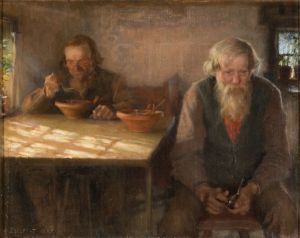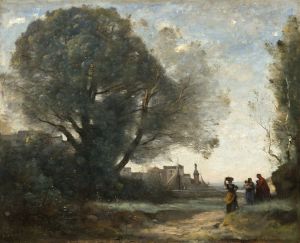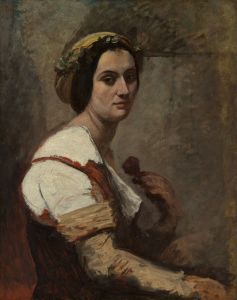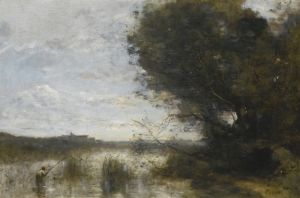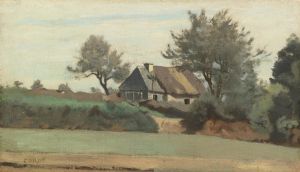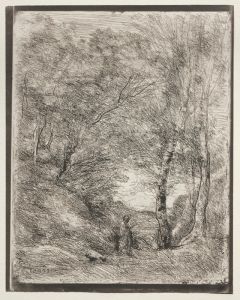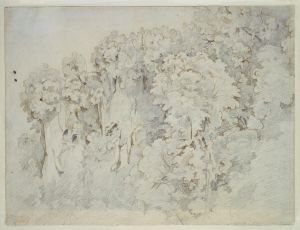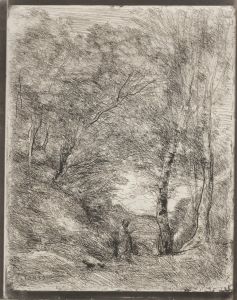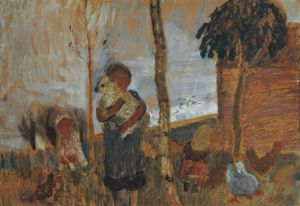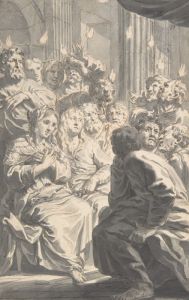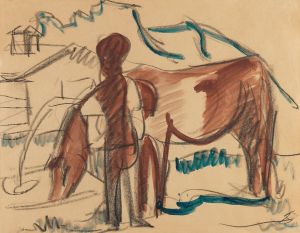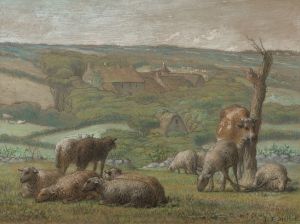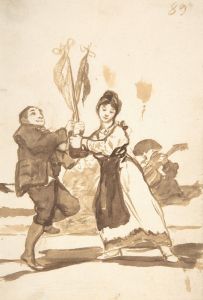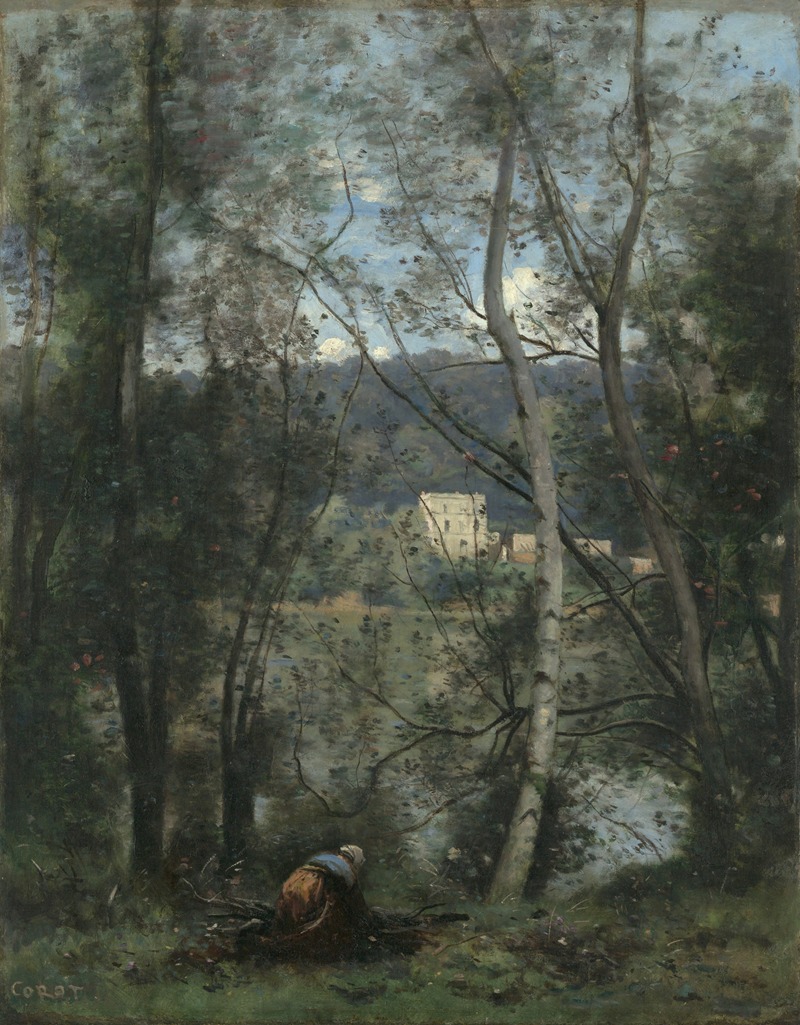
A Woman Gathering Faggots at Ville-d’Avray
A hand-painted replica of Jean-Baptiste-Camille Corot’s masterpiece A Woman Gathering Faggots at Ville-d’Avray, meticulously crafted by professional artists to capture the true essence of the original. Each piece is created with museum-quality canvas and rare mineral pigments, carefully painted by experienced artists with delicate brushstrokes and rich, layered colors to perfectly recreate the texture of the original artwork. Unlike machine-printed reproductions, this hand-painted version brings the painting to life, infused with the artist’s emotions and skill in every stroke. Whether for personal collection or home decoration, it instantly elevates the artistic atmosphere of any space.
Jean-Baptiste-Camille Corot was a pivotal figure in landscape painting during the 19th century, and his work "A Woman Gathering Faggots at Ville-d’Avray" exemplifies his contribution to the genre. Corot, born in Paris in 1796, was a leading figure in the Barbizon School, a movement that emphasized naturalism and paved the way for Impressionism. His works are celebrated for their poetic quality and masterful treatment of light and atmosphere.
"A Woman Gathering Faggots at Ville-d’Avray" is one of Corot's many paintings that depict the serene landscapes of Ville-d’Avray, a small village near Paris where his family owned a house. This location was a frequent subject in Corot's oeuvre, providing a tranquil setting that allowed him to explore the interplay of light and shadow, as well as the subtleties of the natural environment. The painting captures a rural scene where a woman is engaged in the humble task of gathering wood, or faggots, which were commonly used for fuel.
Corot's technique in this painting reflects his characteristic style, which blends elements of realism with a lyrical, almost dreamlike quality. He often employed a muted palette, focusing on soft greens, browns, and grays to convey the gentle beauty of the countryside. The composition is typically balanced, with a keen attention to the harmony between the figure and the landscape. The woman, though central to the scene, is integrated into the environment, emphasizing the connection between humans and nature.
The painting is notable for its atmospheric effects, a hallmark of Corot's work. He was adept at capturing the transient qualities of light and air, which is evident in the way the foliage and sky are rendered. This ability to evoke mood and atmosphere had a significant influence on later artists, particularly the Impressionists, who admired Corot's innovative approach to plein air painting.
Corot's influence extended beyond his technical skills; he was also a mentor to many younger artists. His studio was a gathering place for aspiring painters, and he was generous in sharing his knowledge and techniques. This mentorship helped to disseminate his ideas and ensured his lasting impact on the art world.
"A Woman Gathering Faggots at Ville-d’Avray" is housed in the collection of the National Gallery of Art in Washington, D.C. It remains a testament to Corot's skill in capturing the quiet dignity of rural life and the enduring beauty of the natural world. Through his work, Corot invites viewers to appreciate the simple, often overlooked moments of everyday life, rendered with sensitivity and grace.
In summary, Jean-Baptiste-Camille Corot's "A Woman Gathering Faggots at Ville-d’Avray" is a quintessential example of his landscape painting, showcasing his mastery of light, atmosphere, and composition. It reflects his deep connection to the French countryside and his ability to transform ordinary scenes into poetic expressions of nature's beauty.





